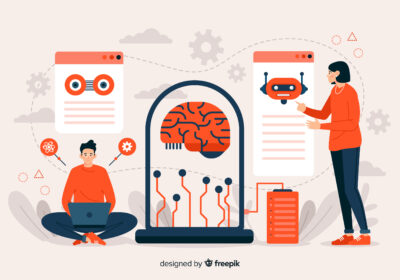Web app development is a complex process that involves various stages, from conceptualization and design to deployment and maintenance. It requires a deep understanding of both the technical aspects and the user’s needs. The goal is to create a web application that is not only functional and user-friendly but also performs optimally under different conditions.
In the UAE, the demand for website and app development services is on the rise. With the country’s rapid digital transformation, businesses are increasingly turning to web development software to create robust and efficient web applications. This trend is expected to continue as more companies recognize the benefits of having a strong online presence.
Stay tuned for the next section where we will delve deeper into the specific tools and techniques used in web app development. We will also discuss the unique challenges and opportunities in the UAE’s web development industry.
Tools for Web App Development
Web app development involves a variety of tools, each serving a specific purpose in the development process. These tools range from programming languages and frameworks to testing and deployment tools.
Programming Languages: The choice of programming language is crucial in web app development. Languages like JavaScript, Python, and Ruby are commonly used due to their robust libraries and frameworks that speed up the development process.
Frameworks: Frameworks like React.js, Angular.js, and Vue.js for frontend, and Django, Flask, and Ruby on Rails for backend, provide pre-written code to help developers avoid writing common functionalities from scratch.
Version Control Systems: Tools like Git help developers track changes in the codebase, making it easier to collaborate and manage different versions of the project.
Integrated Development Environments (IDEs): IDEs like Visual Studio Code, Sublime Text, and Atom offer features like syntax highlighting and auto-completion, which enhance developer productivity.
Testing Tools: Tools like Jest, Mocha, and Selenium are used for testing the application to ensure it works as expected and to catch any bugs or errors early in the development process.
Deployment Tools: Tools like Docker, Jenkins, and Kubernetes help in automating the deployment process, ensuring that the application is seamlessly delivered to the end-users.
Techniques for Performance Optimization
Performance optimization is a critical aspect of web app development. It ensures that the application runs smoothly, providing a seamless user experience. Here are some techniques commonly used:
Minification and Compression: Minification involves removing unnecessary characters from the code without changing its functionality. Compression reduces the size of the files sent from the server to the browser. Tools like UglifyJS and Gzip can be used for this purpose.
Lazy Loading: Lazy loading is a technique where certain elements of the web application are only loaded when they are needed, reducing the initial load time.
Caching: Caching involves storing copies of files in a cache, or temporary storage location, so that they can be accessed more quickly.
Content Delivery Network (CDN): A CDN is a network of servers that deliver web content based on the user’s geographic location, the origin of the webpage and the content delivery server. This results in faster content delivery.
Database Optimization: Database optimization involves techniques like indexing, query optimization, and efficient database schema design to reduce the time taken to fetch data from the database.
Techniques for Performance Optimization
Performance optimization is a critical aspect of web app development. It ensures that the application runs smoothly, providing a seamless user experience. Here are some techniques commonly used:
Minification and Compression: Minification involves removing unnecessary characters from the code without changing its functionality. Compression reduces the size of the files sent from the server to the browser. Tools like UglifyJS and Gzip can be used for this purpose.
Lazy Loading: Lazy loading is a technique where certain elements of the web application are only loaded when they are needed, reducing the initial load time.
Caching: Caching involves storing copies of files in a cache, or temporary storage location, so that they can be accessed more quickly.
Content Delivery Network (CDN): A CDN is a network of servers that deliver web content based on the user’s geographic location, the origin of the webpage and the content delivery server. This results in faster content delivery.
Database Optimization: Database optimization involves techniques like indexing, query optimization, and efficient database schema design to reduce the time taken to fetch data from the database.
Web and App Development in the UAE
The UAE has emerged as a hub for web and app development, with a growing number of businesses seeking these services. The country’s digital transformation initiatives have spurred this growth, with the government and private sector investing heavily in technology.
Web development software is widely used in the UAE to create dynamic and interactive websites. These tools allow developers to build websites that are visually appealing, user-friendly, and optimized for performance. They also enable businesses to reach a wider audience and provide better services.
In addition to website development, app development is also gaining traction in the UAE. Businesses are increasingly recognizing the importance of having a mobile presence, and are investing in app development to engage with their customers more effectively.
The use of advanced tools and techniques in web and app development is prevalent in the UAE. Developers in the region are leveraging programming languages, frameworks, and other tools to build high-quality web applications. They are also employing performance optimization techniques to ensure that these applications deliver a seamless user experience.
In conclusion, the UAE is at the forefront of web and app development, with businesses in the region harnessing the power of technology to drive growth and innovation.
Conclusion
Building a performance-optimized web application is a complex process that requires the right tools and techniques. From choosing the appropriate programming languages and frameworks to implementing performance optimization techniques, every step plays a crucial role in the development process.
In the UAE, the demand for web and app development services is growing rapidly. Businesses are leveraging advanced web development software to create robust and efficient web applications. They are also employing various performance optimization techniques to ensure a seamless user experience.
The digital transformation in the UAE has opened up new opportunities for businesses. By harnessing the power of web and app development, they can reach a wider audience, provide better services, and drive growth and innovation. In conclusion, building a performance-optimized web application is not just about using the right tools and techniques. It’s also about understanding the user’s needs





